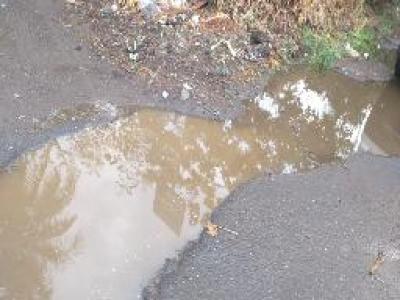IoT

This survey covers more than 150 published papers related to sub-6 GHz wideband LNAs from IEEE publications such as ISSCC, JSSC, TMTT, RFIC, MWCL, TCAS and NEWCAS published in the last 20 years. The considered LNAs are classified according to the technology node and its topology. The presented database is a useful tool for investigating technology trends and comparing the performance of common LNA design styles.
- Categories:
 537 Views
537 ViewsWe conduct to our knowledge a first measurement study of commercial 5G performance on smartphones by closely examining 5G networks of three carriers (two mmWave carriers, one mid-band 5G carrier) in three U.S. cities. We conduct extensive field tests on 5G performance in diverse urban environments. We systematically analyze the handoff mechanisms in 5G and their impact on network performance, and explore the feasibility of using location and possibly other environmental information to predict the network performance.
- Categories:
 806 Views
806 Views
The boring and repetitive task of monitoring video feeds makes real-time anomaly detection tasks difficult for humans. Hence, crimes are usually detected hours or days after the occurrence. To mitigate this, the research community proposes the use of a deep learning-based anomaly detection model (ADM) for automating the monitoring process.
- Categories:
 852 Views
852 Views
We propose a blockchain-enabled zero trust information sharing protocol. The proposed protocol supports the filtering of fabricated information, and protect participant privacy during information sharing. We then evaluate its performance using a series of experiments.
- Categories:
 431 Views
431 ViewsThis data set is the result of model test trained on the basis of the Stanford earthquake dataset (stead): a global data set of seismic signals for AI, which can effectively get the seismic signal and the arrival time of seismic phase from the image, so as to prove the effectiveness of this model
- Categories:
 550 Views
550 ViewsThe Widar3.0 project is a large dataset designed for use in WiFi-based hand gesture recognition. The RF data are collected from commodity WiFi NICs in the form of Received Signal Strength Indicator (RSSI) and Channel State Information (CSI). The dataset consists of 258K instances of hand gestures with a duration of totally 8,620 minutes and from 75 domains. In addition, two sophisticated features from raw RF signal, including Doppler Frequency Shift (DFS) and a new feature Body-coordinate Velocity Profile (BVP) are included.
- Categories:
 15511 Views
15511 Views
Open dataset from Machine Learning Repository of Center for Machine Learning and Intelligent Systems at the University of California, Irvine.
- Categories:
 785 Views
785 Views
This repository hosts the data and code for studying the UAV positioning problem under obstructive environment. This study focuses on the scenario of the low-altitude UAV to ground communication in a dense urban environment. There could be a lot of local structure, such as buildings and trees, that blocks the communication signal. As a result, the UAV should be optimized to smartly explore a good propagation condition to communicate with the user. At the same time, the UAV also needs to balance the communication link with the BS.
- Categories:
 432 Views
432 ViewsThis dataset contains RF signals from drone remote controllers (RCs) of different makes and models. The RF signals transmitted by the drone RCs to communicate with the drones are intercepted and recorded by a passive RF surveillance system, which consists of a high-frequency oscilloscope, directional grid antenna, and low-noise power amplifier. The drones were idle during the data capture process. All the drone RCs transmit signals in the 2.4 GHz band. There are 17 drone RCs from eight different manufacturers and ~1000 RF signals per drone RC, each spanning a duration of 0.25 ms.
- Categories:
 16618 Views
16618 Views


